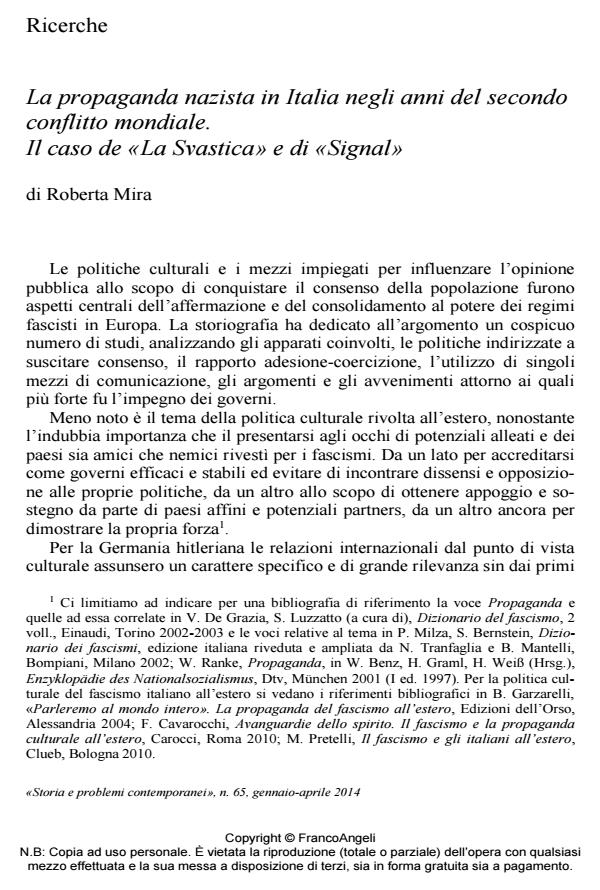Nazi Propaganda in Italy during the Second World War. The Cases of "La Svastica" and «Signal»
Journal title STORIA E PROBLEMI CONTEMPORANEI
Author/s Roberta Mira
Publishing Year 2014 Issue 2014/65
Language Italian Pages 20 P. 163-182 File size 222 KB
DOI 10.3280/SPC2014-065008
DOI is like a bar code for intellectual property: to have more infomation
click here
Below, you can see the article first page
If you want to buy this article in PDF format, you can do it, following the instructions to buy download credits

FrancoAngeli is member of Publishers International Linking Association, Inc (PILA), a not-for-profit association which run the CrossRef service enabling links to and from online scholarly content.
Cultural policies to influence domestic and foreign public opinion were crucial for Fascist regimes. Nazi Germany relied upon foreign propaganda - implemented by several means, e.g. the ministry of Foreign Affairs, cultural institutes and exchanges, press - as a key tool to create a New European Order under the Third Reich. German cultural policy in Italy, Germany’s principal ally, was meant to present the Reich in a positive way, to strengthen the alliance, support common policies, achieve common goals and fight common enemies. The essay focuses on some aspects of Nazi propaganda in Italy during World War II, analysing two magazines fairly widespread in the Peninsula: "La Svastica" and «Signal».
Roberta Mira, La propaganda nazista in Italia negli anni del secondo conflitto mondiale. Il caso de «La Svastica» e di «Signal» in "STORIA E PROBLEMI CONTEMPORANEI" 65/2014, pp 163-182, DOI: 10.3280/SPC2014-065008